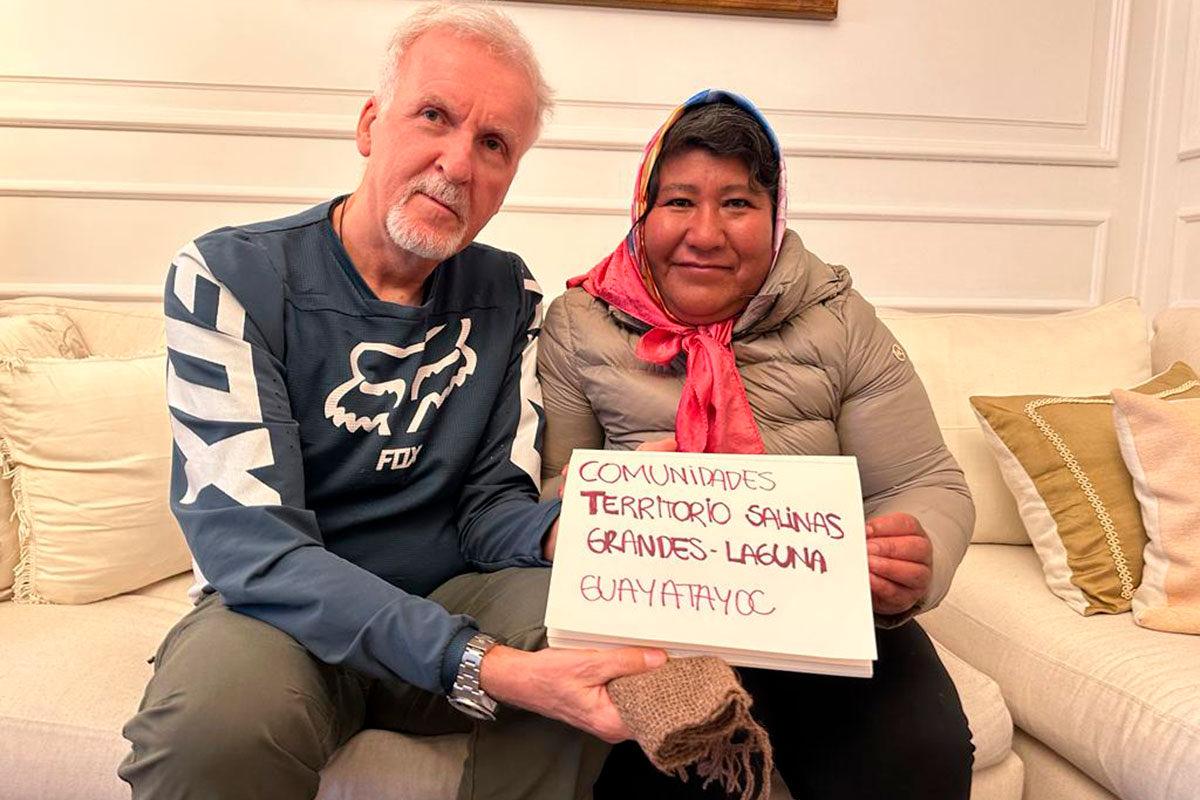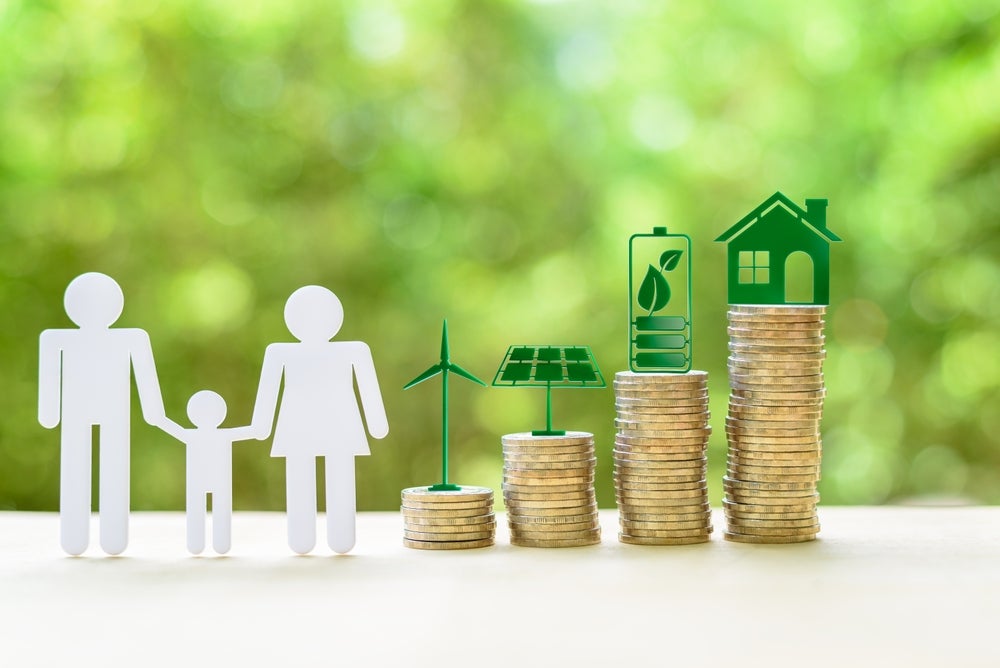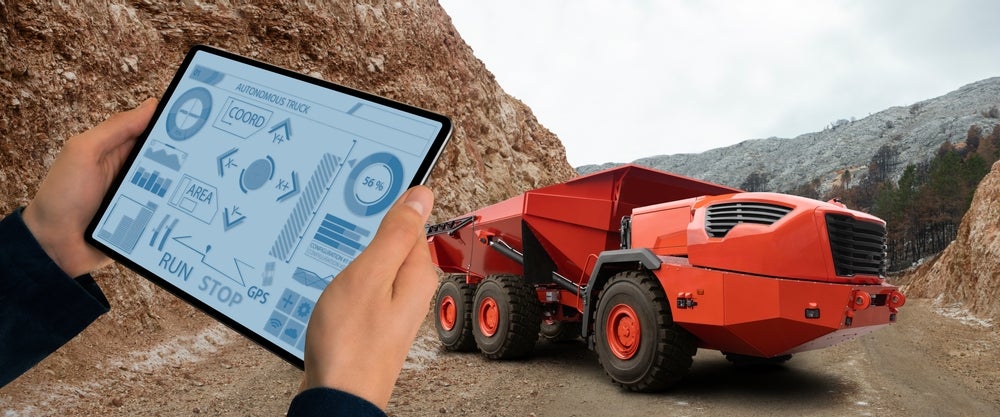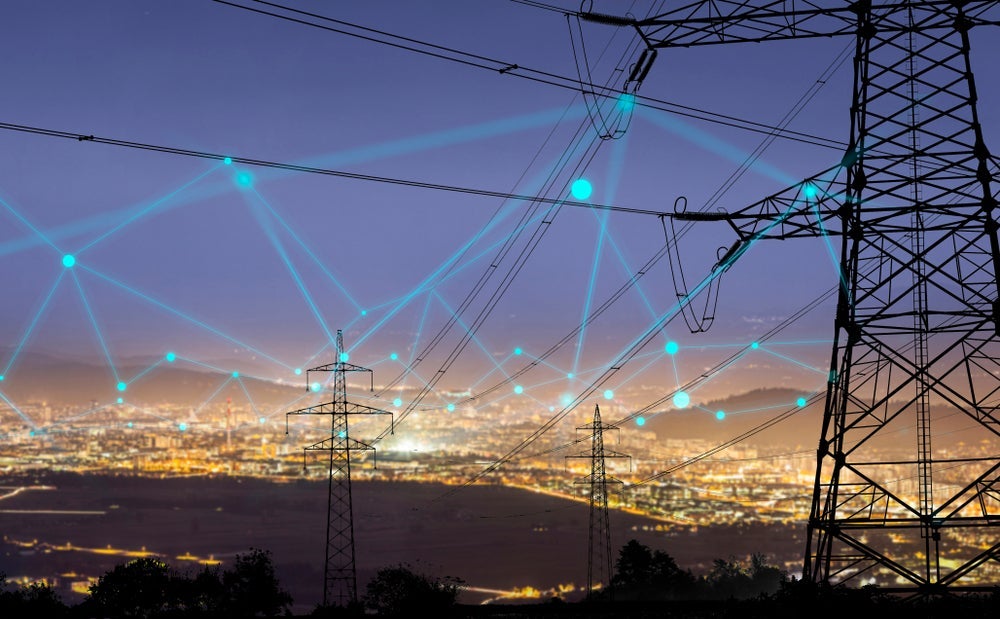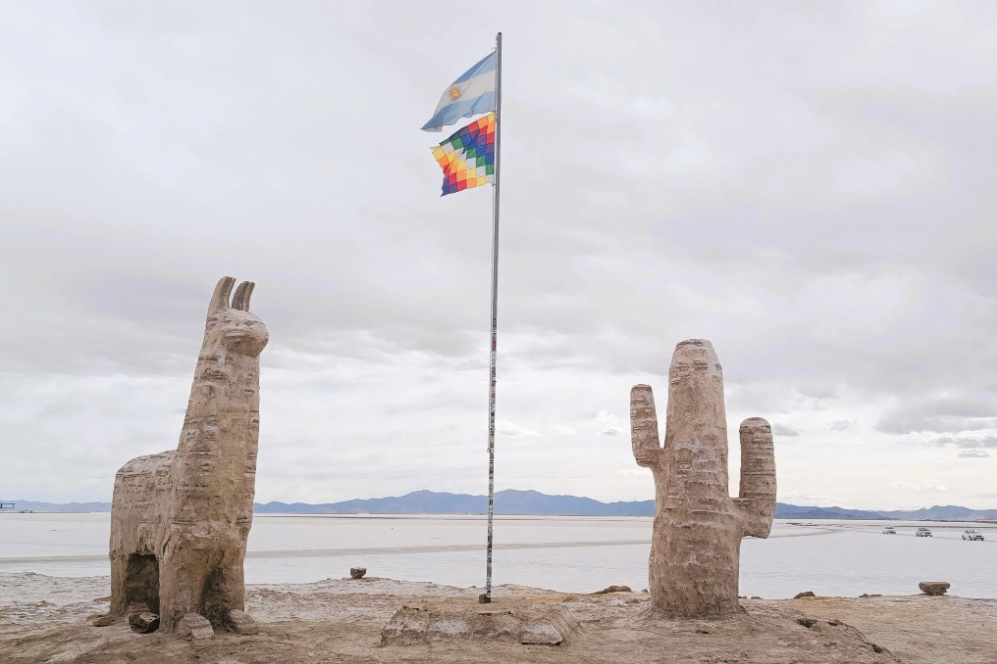
Lithium is the lightest metal – an excellent heat and electricity conductor with half the density of water – and it is abundant, primarily found in natural brines (salt flats), pegmatites (igneous rock/volcanoes), oil wells, geothermal fields and seawater. Of its known reserves, 85% are in Bolivia, Chile and Argentina.
The Kolla are an Indigenous people living in the west of the Jujuy and Salta provinces in northern Argentina, and in Bolivia and Chile. The Kolla community in the Salinas Grandes salt flat, a vast white desert nearly 3,500m above sea level, depends on tourism and salt extraction for their livelihoods. In Jujuy, 7.8% of the population, or more than 50,000 people, identify as indigenous.
With the arrival of lithium companies in 2010, 33 communities of the Salinas basin saw their historical rights over the use of salt threatened, and lodged an official complaint with the government of Jujuy against plans for lithium extraction on their lands, deeming such plans a threat to their way of life.
In late May 2023, Carlos Sadir won provincial elections in Jujuy, appointed Governor Gerardo Morales and tasked him with reforming the local constitution to promote public lands for “productive” uses while cancelling the delivery of land titles to local communities.
The unexpected speed with which the provincial constitution was reformed – it took less than a week, when it was planned to be debated during three months – sparked massive protests across Jujuy and violent repression by Morales, which was denounced by several international human rights institutions.
See Also:
Resistance to lithium mining in Argentina
A two-hour drive on National Route 52 separates San Salvador de Jujuy, the province’s capital, from the Salinas Grandes salt flat. Under the midday sun, tourists stop to contemplate the white expanse. Tours across the salt flat are coordinated by locals such as 35-year-old Eloy Quispe, a representative of the Kolla Pozo Colorado community.
How well do you really know your competitors?
Access the most comprehensive Company Profiles on the market, powered by GlobalData. Save hours of research. Gain competitive edge.

Thank you!
Your download email will arrive shortly
Not ready to buy yet? Download a free sample
We are confident about the unique quality of our Company Profiles. However, we want you to make the most beneficial decision for your business, so we offer a free sample that you can download by submitting the below form
By GlobalDataSat on a chair made out of salt, Quispe explains that his people’s fight predates lithium: “Everyone promises development, but no one is [accountable for that]. The constitution establishes that underground resources belong to the state, but we are the ones who inhabit these lands.”
The provincial mining company, JEMSE, wants to lease Salinas Grandes for lithium production through the Agonic Mine. However, according to convention 169 of the International Labour Organization – the right of indigenous peoples to participate in the use, management and conservation of natural resources – the government of Jujuy has to recognize the Kolla as an ancient community.
Keep up with Energy Monitor: Subscribe to our weekly newsletter“Europeans and North Americans feel environmentally responsible, which is why they want to use more electric cars that generate fewer emissions, but the impact of this energy transition is going to be felt by us,” Quispe continues.
No one in his community is against technology or development, he says, but they want environmental guarantees and respect for their rights. “The 3% mining royalty [for the province] is nothing. Extracting the minerals here turns these places into sacrificial zones. The government tells us that we are selfish, but they never did anything for us,” Quispe says, before hopping on his motorbike towards the salt flat.
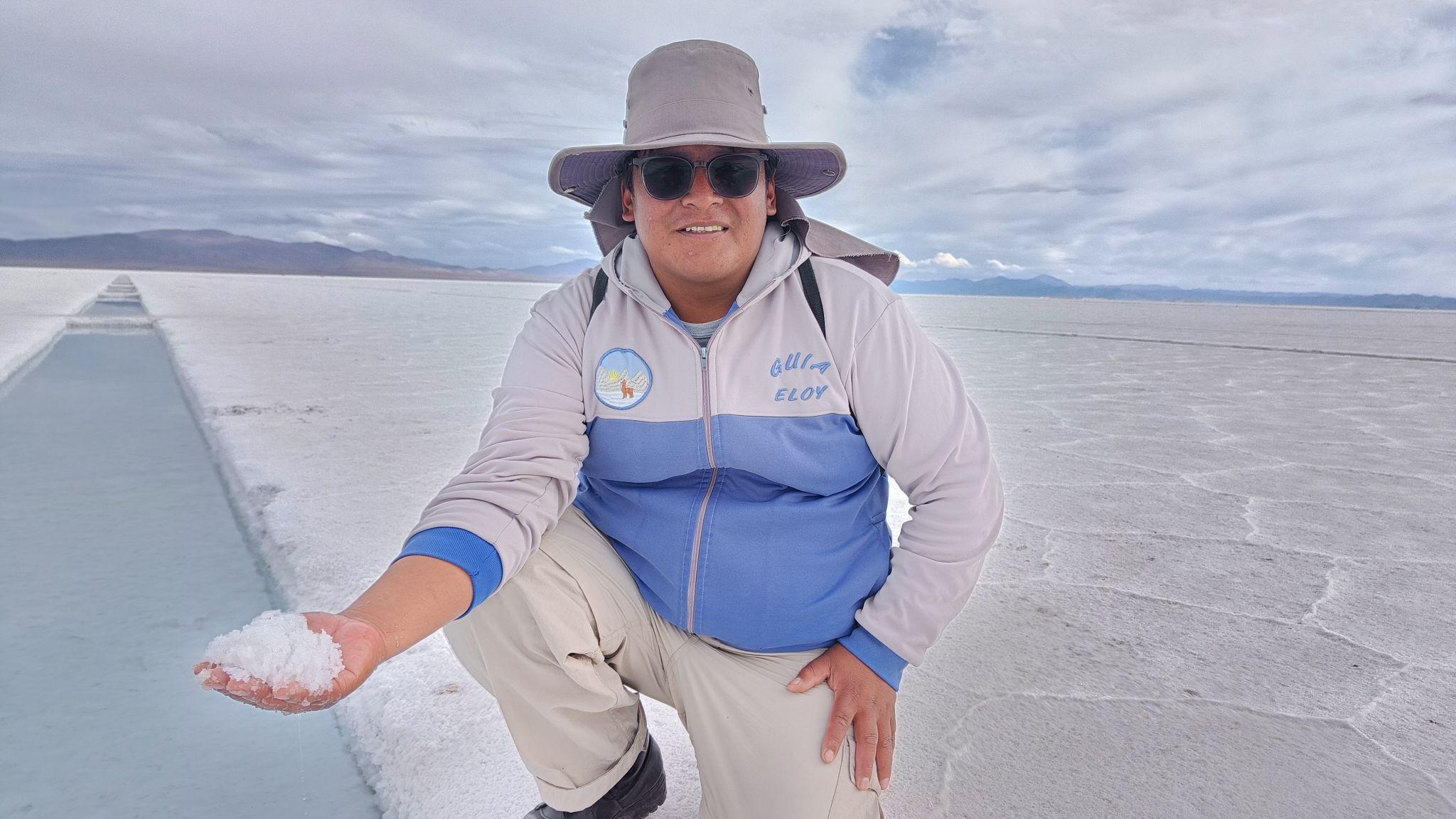
Erika Cañari, another young leader of the Pozo Colorado community, says: “We see the exploitation of lithium as a temporary activity, because it breaks the balance of the system itself. We subsisted on salt, then began with tourism about 15 years ago. In 2015, the tours in the salt flat began. We raise llamas, sheep and cows, and sell fabrics to the tourists. In Olaroz [another salt flat in Juluy where lithium extraction has been going on for ten years] they had fewer opportunities as they were more isolated, so they were satisfied with what the mining company offered them.”
Water is a scarce resource in Salinas Grandes; it rains barely 200ml a year, says Cañari. “White gold for us is water, not lithium,” says Quispe.
“Some of us have well water,” Cañari explains. “[But] the mining companies do not guarantee us water beyond five years. Evaporation is the technology they have been using [to extract lithium] in Jujuy, they have not presented us with anything more modern”.
After the controversial vote on the new constitution in June 2023, Cañari, Obispe and other members of the 33 communities in Salinas Grandes spent 15 days in Purmamarca, at the intersection of routes 79 and 152, in protest. The government sought to quell the dissent and there were many injuries including people who lost their eyes.
The conflict won international attention when film director James Cameron visited Jujuy in June, saying he felt he “walked into an ambush” on lithium. His visit allowed the local indigenous community to put their environmental concerns to Morales.

Declaring lithium a strategic mineral
In conversation with Energy Monitor from Buenos Aires, Enrique Viale, an activist and member of the Argentine Association of Environmental Lawyers, explains that according to article 124 of the National Constitution – reformed in 1994 by neoliberal President Carlos Menem – natural resources belong to the provinces, but at the same time article 41 proposes minimum standards of environmental protection at national level.
“There could be a law on lithium [extraction],” says Viale. “It is true that the resources belong to the provinces, but the mining code is national. Just as the provinces gave the nation the civil and penal code, they also gave it the mining code. There you can regulate a lot; among other things declare lithium as a strategic mineral [and set conditions for its extraction].”
“In Chile, the mining companies paid 40% of mobile royalties [the royalties hinge on international prices] even before [current left-wing president Gabriel] Boric [took over], under the neoliberal [Sebastián] Piñera. Of the lithium triangle [of Argentina, Bolivia and Chile], we have by far the most scandalous legislation. [And] this without taking into account the environmental impacts.”
Read more from this author: Julián ReingoldThe Argentine mining investment law sets a royalty ceiling of 3% (which ends up being 1.5–1.6% after the discounts applied by an accelerated repayment scheme) and companies only begin to pay earnings for the exemptions after the sixth or seventh year, but this could be repealed, said Viale. A single province has no bargaining power next to a corporate giant like SQM or Ganfeng. Another downside of Argentina’s federalism is great regulatory heterogeneity across provinces, which increases the transaction costs of companies operating in the sector.
“Declaring lithium as a strategic mineral is not enough,” Viale concludes. “You have to set a series of conditions: who is going to exploit it and how. Will there be a national lithium company with which they have to associate?”
“The new forms of lithium extraction with less water demand are still theoretical,” he says. “For now the reality is that they are looting and contaminating.”
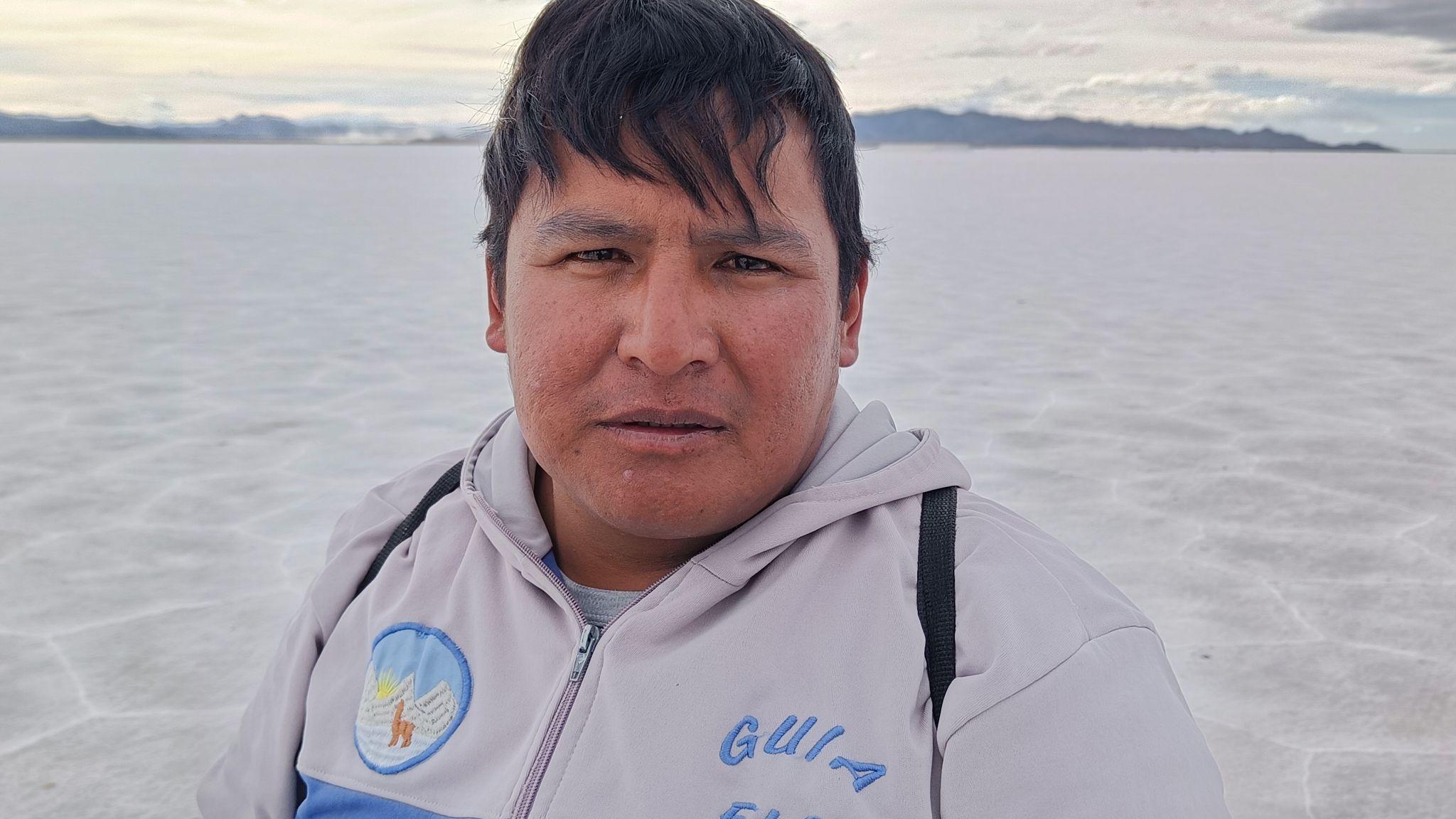
“We wanted to see the [new] constitutional text but we couldn’t until the day it was approved,” Pía Marchegiani, director of environmental policy at the NGO Environment and Natural Resources Foundation, told Energy Monitor. “The process was not transparent. It was going to take 90 days, and barely a month later it was all over. This impinges on participation rights – established by the Escazú Agreement – and represents a lack of indigenous consultation.”
For her, there are three main issues: shrinking public space for local communities to express themselves, their right to claim environmental and territorial protection from mining, and access to justice in environmental matters.
There are many commonalities with the mining and green hydrogen plans in Chubut, in particular the rejection of a democratic, public debate, Marchegiani added.
“Ten years ago the price of lithium was around $5,000 per tonne (t) and it was a small market that did not even reach 200,000t globally,” says Franco Mignacco, director and president of Minera EXAR, part of Lithium Americas, a Canada-headquartered mining company that is active in the Caucharí-Olaroz salt flat in Jujuy. “The peak of the [supply] curve will arrive at the end of 2024, targeting mainly the Asian market through agreements with Chinese companies – more than 78% of the [global lithium] market is split between Japan, Korea and China,” he said in an interview with Energy Monitor.

Mignacco explained that the quality of the product renders it suitable for different uses: higher purity for batteries, intermediate for technical uses and lower for industrial applications. To produce 40,000t of lithium, 300,000t of supplies for the lime and carbonation plants are required, he added.
“Argentina decided not to restrict mining concessions: today there are almost 35 lithium projects nationwide, so there is the possibility of being a global power, but we are not yet, we are fourth in the world ranking,” said Mignacco. Recently, EXAR announced that the Caucharí-Olaroz project is advancing toward first production of battery-quality lithium carbonate.
Miguel Soler, Mining Secretary of Jujuy, told Energy Monitor that lithium is an “axis of development” for the province, with 60–70% of local workers active on the projects. “In the Salinas Grandes there are three or four communities that speak out, but they are not representative. The communities of Susques and Huancar are on board.” The electrification of automotive public transport should be a priority in Argentina, he added.
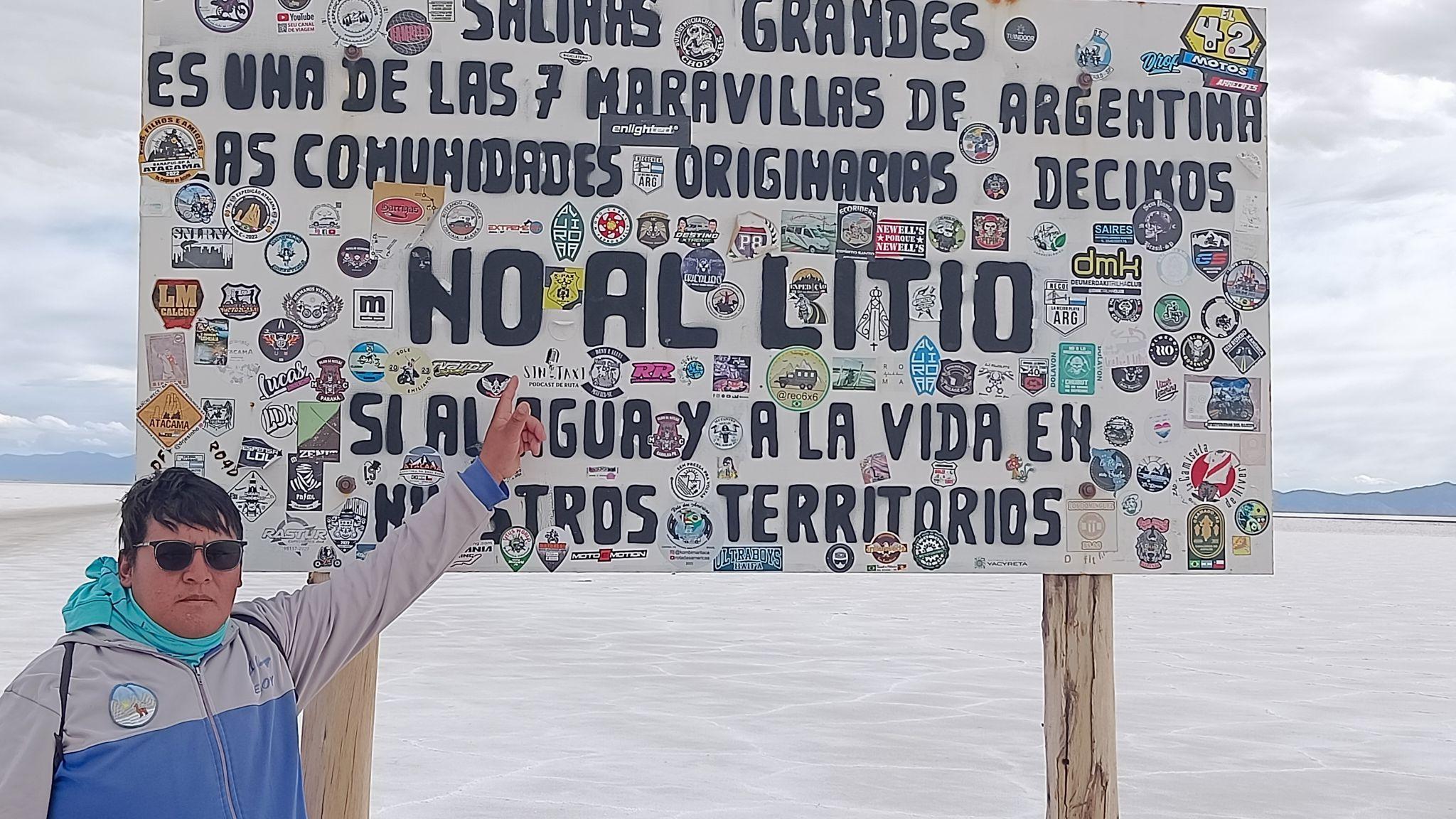
Can lithium mining reduce its impact on water supplies?
According to Soler, Jujuy’s water and environment are being respected, since lithium mining is done in a hydrological basin that is already developed. The harvested salt is separated into its constituent components and Soler is looking for an offtaker for the residual sodium, potassium and borax chloride. This could be Brazil, where they use salt for cattle raising and in the paper industry.
“The chemistry of each salt flat is different and determines the extraction method,” Ernesto Julio Calvo, a chemist and researcher at the National Scientific and Technical Research Council – Argentina, told Energy Monitor. “The extraction of large volumes of brine can have negative hydrogeological consequences, which surrounding communities are aware of.” Brine extraction may cause freshwater inflow to replace the volume extracted, which would affect water sources for human or agricultural use, he explains.
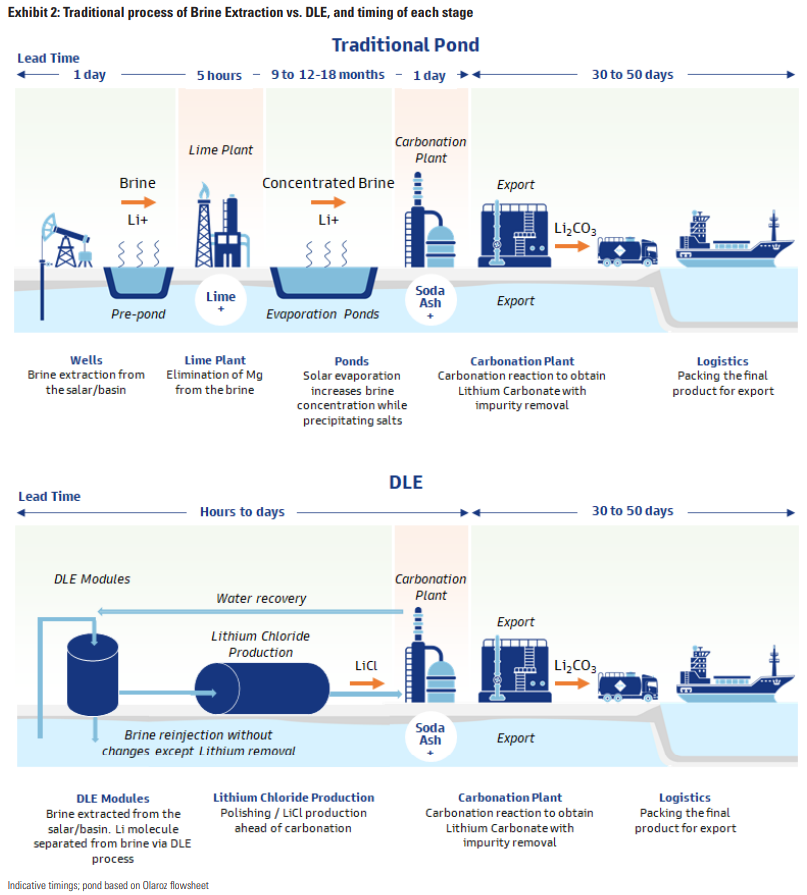
Of all the direct lithium extraction methods (DLE), in Argentina only one works at industrial scale: lithium absorption in columns by the US company Livent (formerly FMC) in Catamarca. It has 40 columns with 400t of gypsum or aluminum hydroxide, which absorb lithium from brine. According to Calvo, this process takes a matter of hours, not months.
“The current method requires one million litres of brine for one kilogram of lithium,” Calvo says. “Water is lost, because ultimately the brine and fresh water aquifers are connected. With the DLE method the brine water is not lost and only requires a little fresh water for purification.”
“DLE processes are modular, so they allow you to continue scaling and increasing investment gradually. The lithium extraction capacity in Argentina today is about 37,000t per year, while in Chile it is around 100,000t,” he adds.
A way out for lithium in Argentina?
Calvo considers that lithium mining has not benefitted local communities in Argentina or Chile. Life in those places is hard, and they are still mostly poor. Lithium became a real estate business, he says, where the Chinese came and put up cash for any properties that contain high values of the mineral.
“What is exported from lithium is 1% of the value that is exported from soybeans,” concludes Calvo. “The Argentine state lost, with the privatisation of YPF, the ability to have a company that could regulate the price of minerals.”
Although Jujuy declared lithium as an strategic resource in 2019, the national debate jumped to another level in late 2022, when the province of La Rioja announced the discovery of this mineral and immediately declared its strategic value. This allowed the government of La Rioja to cancel all the exploration permits already given and appoint the provincial company Kallpa SAPEM as the sole agent responsible for determining the quantity and quality of lithium in its territories.
In an electoral year, some critical voices within the Peronist government are starting to question the status quo: export raw materials at very low cost and import them later as high-value industrial goods. Argentina is aware it has resources the world needs, but is the country going to make the most of them?
The lithium debate in Argentina demonstrates that the energy transition needs active steering to make it just and environmentally sound. As researcher Maristella Svampa states: “Faced with the scenario of dispossession and looting that has taken place in our country in relation to lithium, it is well worth asking what kind of energy transition we are thinking about.”
Argentina – as well as Chile and Bolivia – is faced with the dilemma of whether to extract lithium by creating even more sacrifice zones or to adopt new legislations and technologies that would not limit the ‘white gold’ to the category of “raw materials“. Will the next EU-CELAC meeting address transparently these challenges that the Global South is facing in order to supply the North with the minerals (or batteries) needed for its transition?
